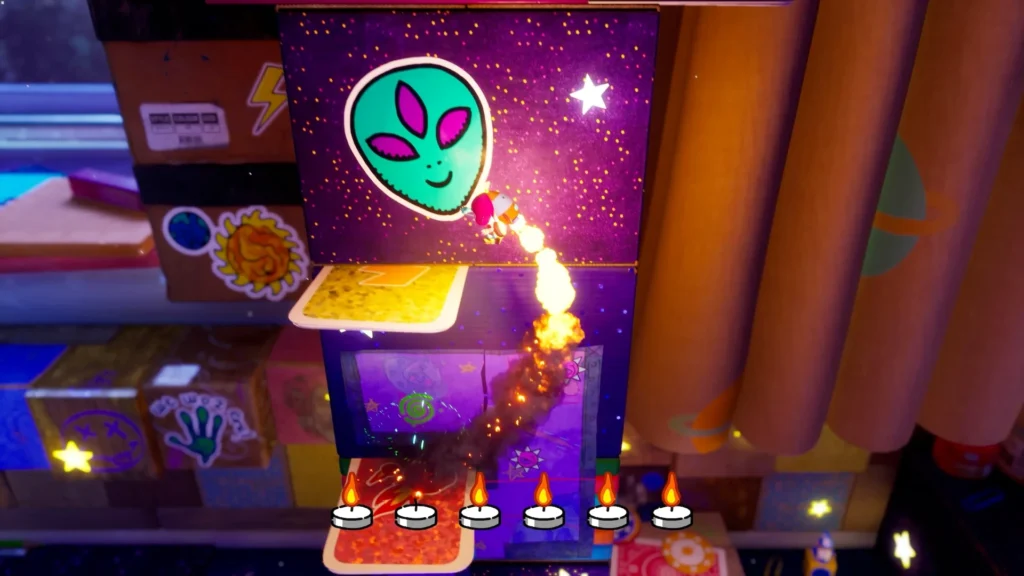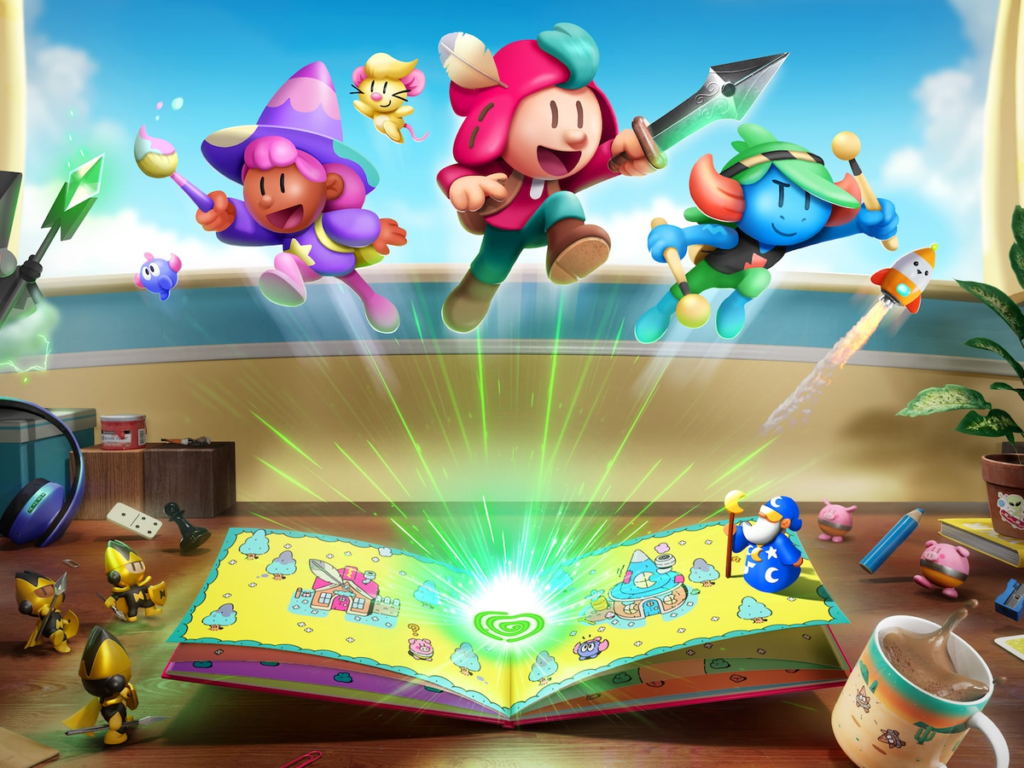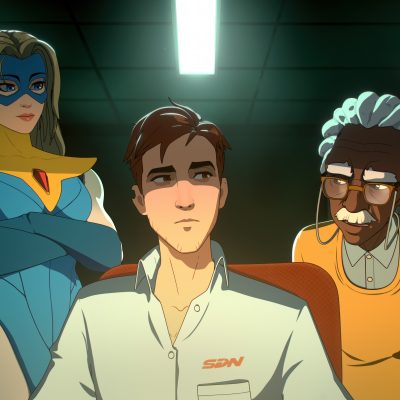In a world where AAA studios have discovered a winning sales formula and continue to replicate it, leaving little room for innovation, the trump card for independent studios lies in their creativity. The Plucky Squire is one of the most imaginative games of this year, perhaps even the past decade, immersing you in its innovative world for 9 to 10 hours.
The game tells the story of a storybook hero named Jot, a warrior, a world traveler, and a writer who turns his adventures into tales for others to enjoy. As the storybook begins, events unfold in the story world (or the game), and Jot, along with two childhood friends, embarks on a journey to restore peace and tranquility to the land of the book, facing off against the villain, Hamgramp. Up to this point, everything follows the storybook script, and you progress and play within the pages of the book. However, the first turning point of the game is the confrontation with Hamgramp. Tired of the usual storyline of being defeated by Jot and his companions, Humgrump decides to change the script using his magic, throwing you out of the book and into the room of the book’s owner, Sam—who happens to be a big fan of Jot and his adventures. This is where your main adventure begins: returning to the book and saving “the Bookish land” from Hamgramp and his nefarious plans!

Characterizations are fun and humorous, with Jot, his companions, Hamgramp, and other NPCs each having their own stories and goals that you will get to know as you accompany them along the way. This development occurs through dialogues, mostly written with a comedic tone and a special sense of humor.
The game can generally be divided into three sections: inside the book, outside the book (on the desk), and mini-games. This makes the game a multi-genre and diverse title, ranging from exploring and interacting with NPCs’ quests within the book’s pages to traveling inside a board game card and engaging in JRPG-style battles to earn items, to various mini-games involving punching, shooting, and musical challenges.
The world inside the book is brought to life with a nostalgic art style that evokes fond memories, setting the stage for the main storyline. The in-book world mostly consists of engaging puzzles, combats, and dialogues while the room section is designed with a focus on platforming, featuring bulkier graphics models, more extensive movement dimensions, and different animations. The mini-games each provide new and amusing challenges in their own right
The gameplay’s charm and the game’s main creativity shine when the in-book world and outside world intertwine in the narrative and gameplay. As you progress in the book, you will need to exit the book, explore the room, and manipulate certain pages. Mechanics and abilities are introduced at a suitable pace, and their usage is well-taught in the game’s progression, ensuring players fully grasp them. This aspect highlights two strengths: first, the game never feels repetitive or monotonous, as almost every chapter introduces a new ability or mechanic that significantly impacts the gameplay. Second, the mini-games are strategically placed within the storyline, keeping the game dynamic and exciting. Each mechanic and ability, when added, introduces a new type of puzzle or combat but also creates new challenges when combined with previous mechanics and abilities. For example, initially, you can rearrange words in the book’s sentences to alter events and the book’s environment. Later, you gain the ability to exit the book, change the page, and re-enter, allowing you to find words from other pages and bring them to different pages for more exciting changes. Later, you get the ability to exit the book and lift one side of the book to create a slope, causing objects in the book’s pages to move and change the environment. New puzzles that combine these abilities await you throughout the game, keeping the world and puzzles fresh and alive.

The combat is designed to be as simple as possible, but the upgrades and abilities for Jot’s sword, along with increased combat challenges and stronger enemies, make this aspect enjoyable too. Boss battles typically occur in the form of diverse and well-crafted mini-games.
The music in each stage is designed according to the stage’s theme and environment type, allowing you to enjoy tunes from classical to jazz to rock and metal with a humorous twist throughout the game. The game’s sound design is another creative strength, as no character speaks, and dialogues are displayed in a typewriter-style text. Each character has a typing sound effect based on their gender, model, and race, effectively conveying the intended feeling. All these elements, along with numerous artistic references in the game—from musicians to painters to writers—showcase the developers’ high artistic flair and creativity.
In conclusion, The Plucky Squire is one of those unique experiences that surprises you at every moment. Play the game, sit back, and enjoy ten hours of pure delight!









